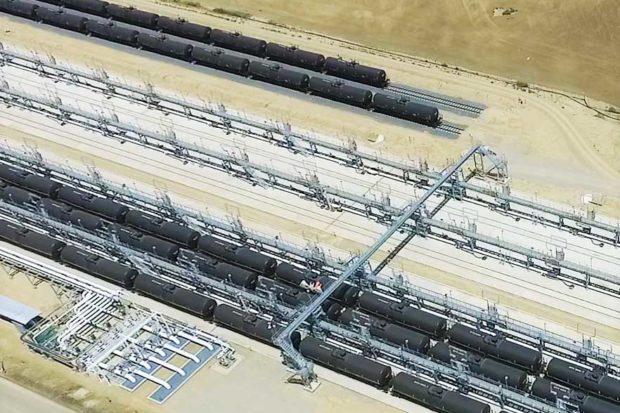
By Tom Frantz
Summertime ozone levels in the San Joaquin Valley do serious damage to the health of residents. Ozone is a gas formed by human activity. Nitrogen oxides (NOx) are one of the precursors to ozone. These are released whenever fuels are burned. Most of our NOx emissions (80%) come from cars, trucks, construction equipment and agricultural machines.
The San Joaquin Valley Air Pollution District cannot directly control mobile sources so it blames the California Air Resources Board and the Environmental Protection Agency (EPA) for our bad air. But NOx must mix with volatile organic compounds (VOCs) to form ozone. Most VOCs are from stationary sources that are regulated by the air district.
One form of VOCs is evaporating hydrocarbons from vehicle fuel systems, plus the oil pumps, pipelines, sumps and tanks in the oil fields. Another type of VOC comes from composting the sewage sludge that is trucked to the San Joaquin Valley from the Bay Area and Southern California. There are also VOCs released from sprays containing deodorants, fragrances, cleaners, adhesives, paints and pesticides.
The biggest source of VOCs in the Valley is emissions from confined animal feeding operations (CAFO). VOCs come from the cows, the manure and the feed. Silage, a chopped up and fermented animal feed, produces alcohol that evaporates when exposed to the air. Alcohol is a VOC and is commonly emitted by wineries.
The air district attempts to control VOCs at dairies by having each operation submit a conservation plan from a menu of potential control items. The items chosen do little to prevent emissions and are basically considered best practices at a well-run dairy. Items such as fixing leaking faucets to keep manure dry or leaving the silage pile covered are on the list. One weird item says feed should be pushed closer to the cows as they eat. But the air district claims to have the strictest CAFO rules in the nation. This is essential because they don’t exist anywhere else.
Another heavily regulated industry with VOC emissions is oil and gas production. The EPA has set most of the rules for the oil fields and requires the air district to enforce them. This polluting industry colludes with the air district continually to minimize controls and mitigation.
The air district manages a bank of emission reduction credits that can be used by polluters for the mitigation of new sources of emissions. Most of these credits are owned by the oil industry. They are also mostly invalid because they are more than 30 years old and from sources that would be regulated today. The EPA was initiating action against these invalid credits last year. Now, the air district and the oil industry have persuaded the new EPA chief, Scott Pruitt, to sign a letter saying these credits are still valid.
There is also, apparently, routine miscalculation and lowballing of emissions done by the air district at the request of polluters. Until emissions reach 20,000 pounds per year, no mitigation is required. Many new sources suspiciously come in just under this limit.
E-mails were discovered during a recent lawsuit showing how air district staff went back and forth with one applicant suggesting dubious ways to reduce emissions below the limit. The permit seeker in this case was the Bakersfield Crude Terminal, which unloads oil trains from Alberta and North Dakota and pumps the crude into a pipeline for export. This oil transfer operation emits VOCs because of escaping vapors and leaking oil. The air district suggested they use a minimum emission rate for leaks from pipes and valves instead of a normal rate.
Another related scheme, which the court actually ruled to be illegal, was separating some of the facility’s emissions and then rounding them to zero in order to keep the total under the mitigation threshold.
There is no doubt that the actions described above have a negative effect on public health. This type of stuff would, in fact, be criminal if done by an individual.
It appears when our air district is faced with a choice between greater profits for polluters or protecting public health, it is clearly not choosing the public. The air district should be held accountable for the unnecessary harm it is causing. How that will happen is presently up in the air with all that ozone.
******
Longtime clean air advocate Tom Frantz is a retired math teacher and Kern County almond farmer. A founding member of the Central Valley Air Quality Coalition (CVAQ), he serves on its steering committee and as president of the Association of Irritated Residents. The CVAQ is a partnership of more than 70 community, medical, public health, environmental and environmental justice organizations representing thousands of residents in the San Joaquin Valley unified in their commitment to improving the health of Californians. For more information, visit www. calcleanair.org.
